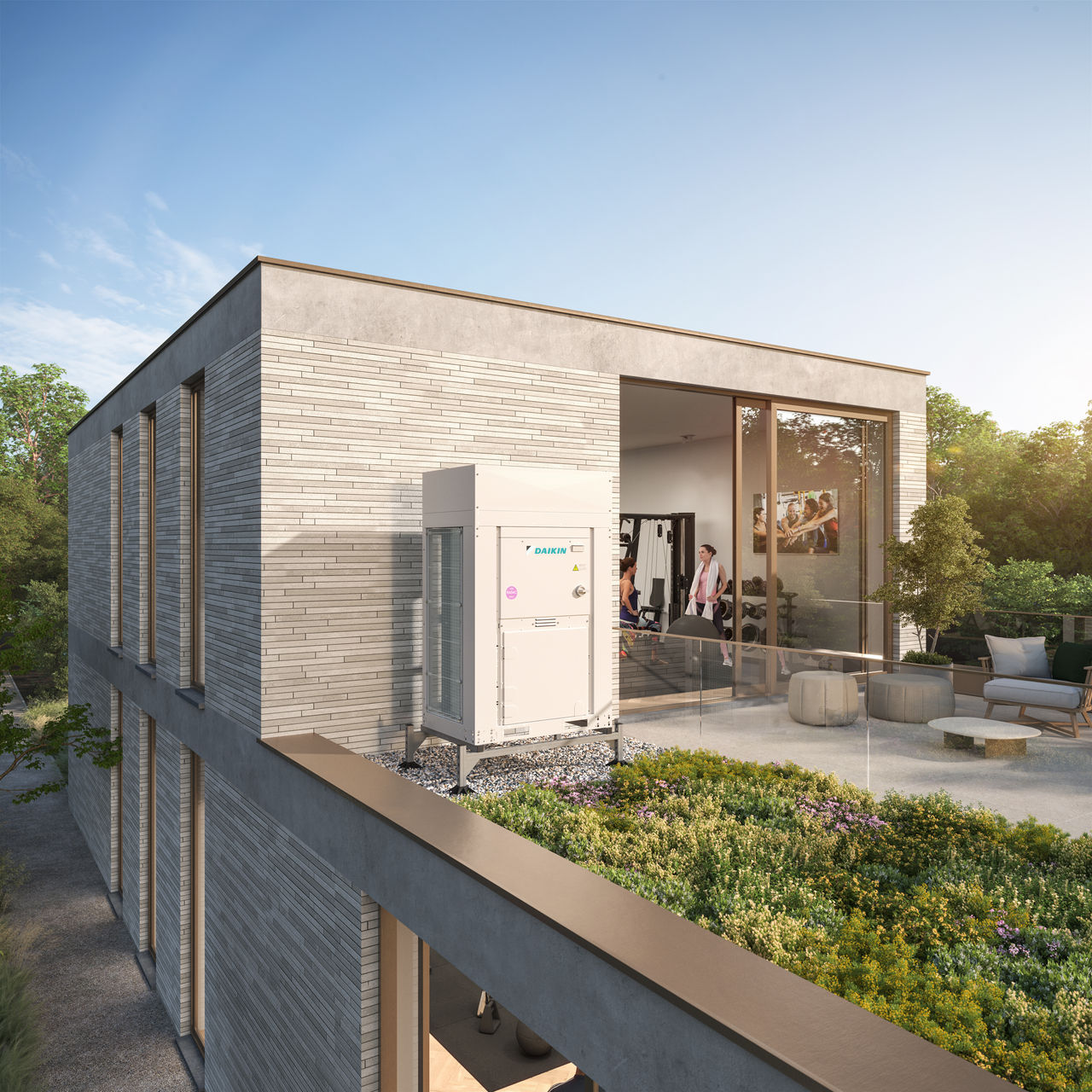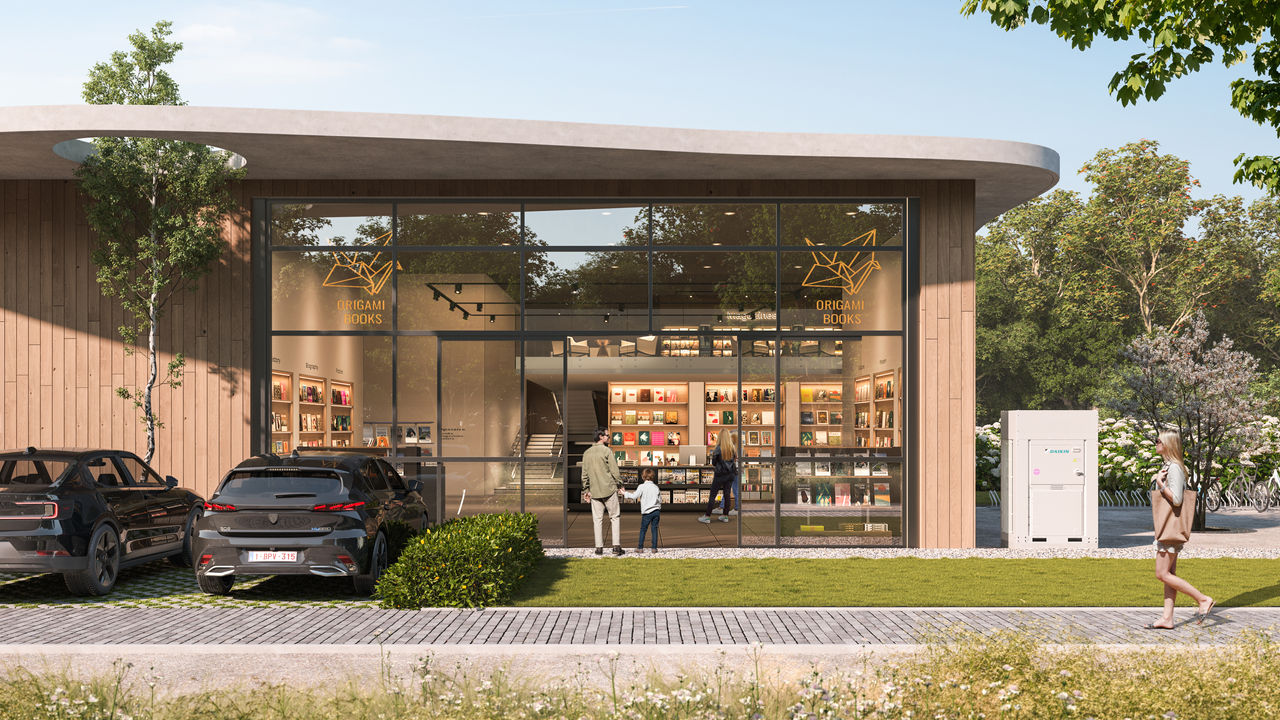
Climate change and global warming are considered two of the greatest threats of our century, whose serious and interconnected consequences affect the environment, health, and the economy.
Over the past century, we have seen a steady increase in the concentration of carbon dioxide in the atmosphere, leading to an increase in global temperature. The increase in temperature causes climate change over a long period increasing the risk of disease, frequency of rainfall and runoff, and the effects of storms. Changing climate parameters, not only temperature but also precipitation, humidity, wind, and solar radiation, will inevitably impact buildings, which are the interface between the outside and the inside.
Heat pump installation reduces CO2 emissions by using renewable energy
Results show how a rising average temperature (in winter) facilitates the energy transition to the use of electric heat pumps to replace fossil fuels.
Heat pumps reduce greenhouse gas emissions by 70% when compared to traditional heating and cooling methods. The lack of a heat source makes this method a viable option to combat global warming and climate change. Heat pumps collect heat energy several times as large as the amount of electricity inputted to operate them, and CO2 is emitted when this electricity is generated, largely broken through the limit of efficiency of conventional combustion-based equipment.
Therefore, CO2 emissions from heat utilization can be drastically reduced by the synergistic effect of the progress of carbon reduction in the power source portfolio and further improvement of the energy efficiency of heat pumps. Renewable energy is counted by heat pumps as final energy: they operate with 100% green electricity and provide 100% renewable, emission-free heating and cooling today.
Reducing greenhouse gas emissions is the means to fighting climate change, and heat pumps achieve this goal by replacing fossil fuels with renewable energy or by making use of excess energy otherwise wasted. The consequence is improved efficiency, cleaner air, and moving towards zero emissions in our economies and societies.

European legislative and political context
The installation of heat pumps is central in the European Commission that set the ambitious goal of considering the electrification of the heating and cooling sector as one of the strategic pathways towards reducing natural gas imports.
The EHPA statistics for 2017 report more than 1.1 million heat pumps sold in Europe leading to an installed capacity of 10.6 million units. This installed stock contributed 29.8 Mt of carbon emission reduction and 116 TWh to energy generated from renewable sources, and it helped reduce final energy demand by 148 TWh.1
The top 3 heat pump markets in Europe are France, Italy, and Spain, which are responsible for 50% of all units sold. The top 10 countries, which additionally include Sweden, Germany, Norway, Finland, Denmark, Switzerland, and Austria are responsible for 90% of all units sold. The European Heat Pump Association (EHPA) estimates that potential sales for all of Europe – under the assumption that all markets achieve the same penetration then the ones just mentioned, would exceed 6 million units per year. The deployment of heat pumps is critical to the transition to clean energy and to achieving carbon neutrality.
Switching to renewable and efficient heating and cooling technologies in buildings, industry, and networks is urgently needed. The European Commission's report on the competitiveness of clean energy technologies also calls for a greater boost to the development of heat pump technology. The European Green Deal industrial plan identifies heat pumps as one of the key technologies to meet the EU's climate neutrality goal.2 Given the strategic importance of heat pumps for the achievement of the EU's decarbonization and energy transition goals, in April 2023 the European Commission launched another major initiative, whose main purpose is precisely to accelerate the installation of heat pumps within the European market, overcoming the obstacles and critical issues that still limit their development throughout Europe.

Heat pump installation in urban buildings
Heat pumps are a solution to provide heating and hot water in residential buildings, both in single and multi-family homes.
Heat pump characteristics make them an ideal technology for any building type with sufficient heat distribution surface to allow comfortable indoor temperatures at comparatively low temperatures of the heat distribution system. These requirements are met in all new buildings including ‘near-zero’ energy, ‘passive’ houses, and energy ‘plus’ building designs. Similarly, heat pumps can replace boilers in the deep renovation of buildings.
To hit the 2030 targets and achieve the necessary rapid decarbonization of the generation of thermal energy, it would be necessary to stop installing traditional low-efficiency generators as soon as possible in new buildings and replace fossil-fuel ones with new models.
Buildings are a significant contributor of carbon emissions. As the broader economy transitions to net zero, various stakeholders are pushing for building decarbonization. Electrifying space and water heating systems is one way to reduce building emissions and electric heat-pump technology, which has improved and become cost-competitive in certain markets, has emerged as an increasingly viable solution.
Make a sustainable residential building stock with heat pump installation
Existing buildings account for approximately 40% of the energy consumption in the European Union (EU) placing them among the most significant CO2 emission sources in Europe (The replacement of fossil-fuelled heating systems with systems using renewable energy sources is a central energy and climate policy concern and one of the prerequisites for reducing CO2 emissions to a climate-friendly level.
Although the installation of heat pumps in new buildings is conventional, the replacement of existing heating systems with heat pumps is more challenging but extremely important. Heat pump systems are economically sustainable solutions in many applications. Indeed, in newly built, residential applications, heat pump systems have reached the stage of a well-established market. Energy efficiency and covering heating and cooling uses with one unique generation unit is a priority in this sector. In 2021 the small-scale heat pumps market for residential and tertiary applications showed an increase of 34% on the previous year, with almost 2.2 million units installed in the EU. 3
Energy consumption in total energy consumption plays an important role in the building sector. For this reason, using heat pumps to supply heat to the large sector of multi-family homes and apartment buildings can significantly lower CO2 emissions. Another advantage is the perfect match with photovoltaics, solar thermal energy, and heating networks that can further help sustainability.

Conclusion
The incremental deployment of heat pumps can reduce and even eliminate the use of fossil-fuelled energy in the building sector and thus delete the negative pollution side-effect of fossil fuel usage.
Accelerating the widespread adoption of heat pumps would have far-reaching implications for the global energy sector, with important knock-on effects for economic activity and the environment, in addition to climate benefits. For this reason, widespread adoption of heat pump technology could help improve air quality and public health.



